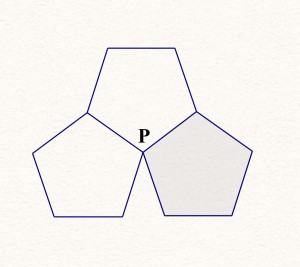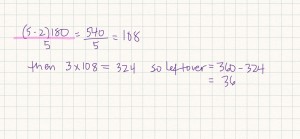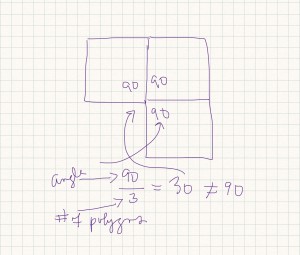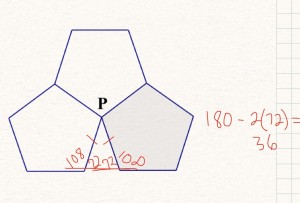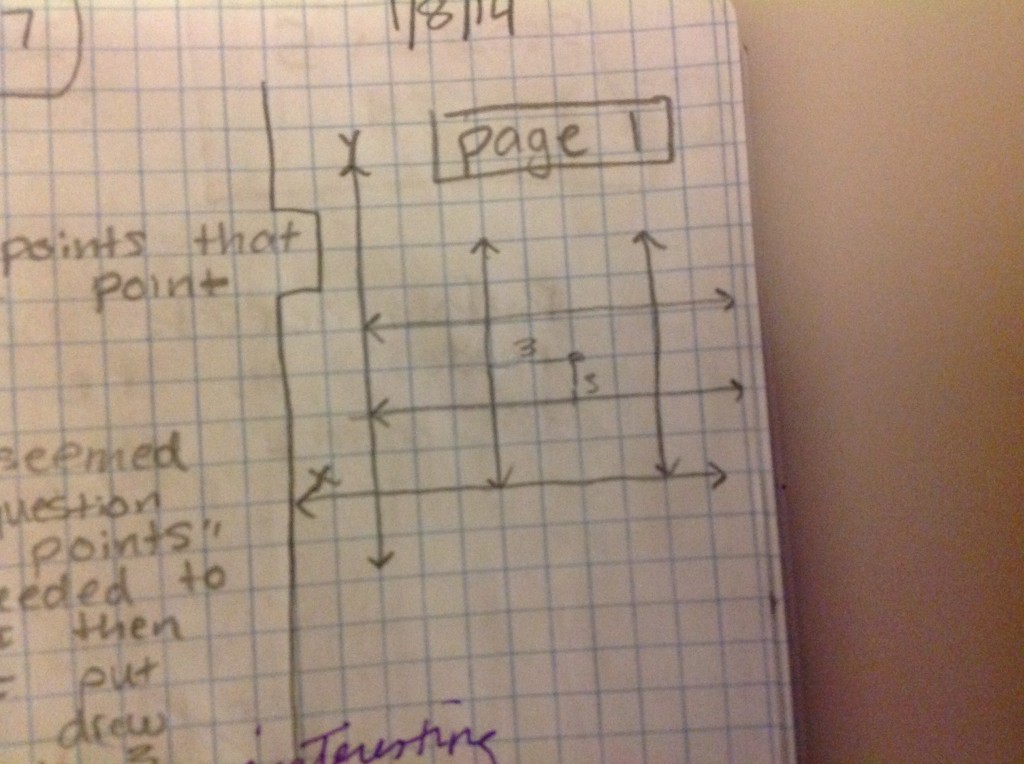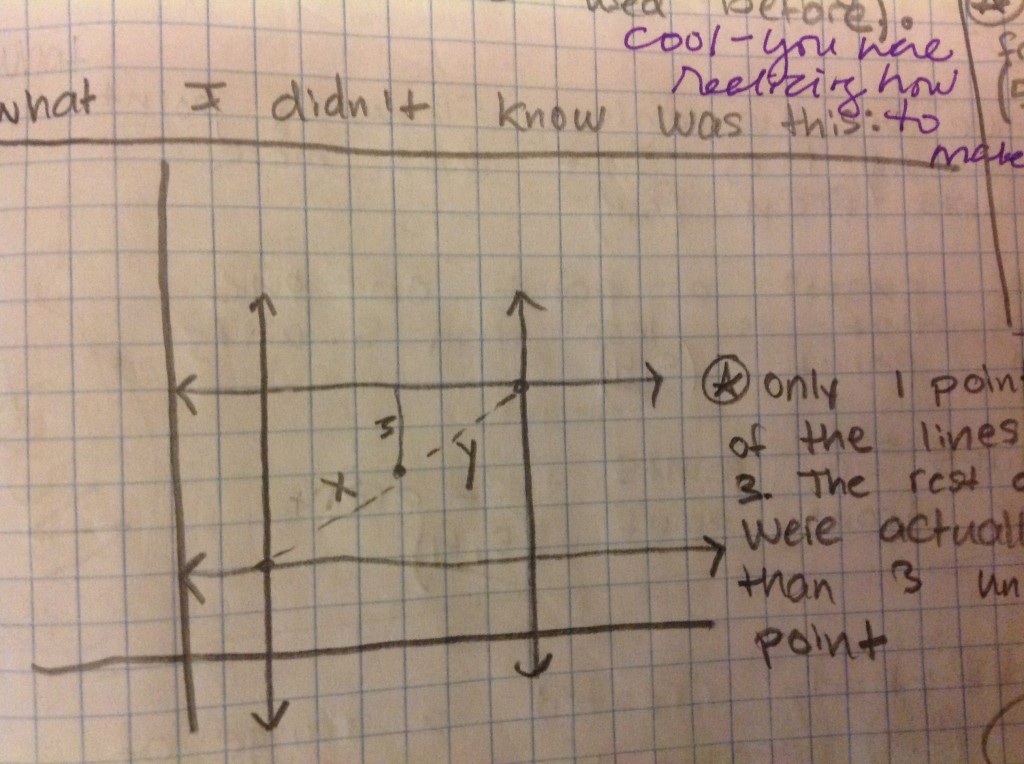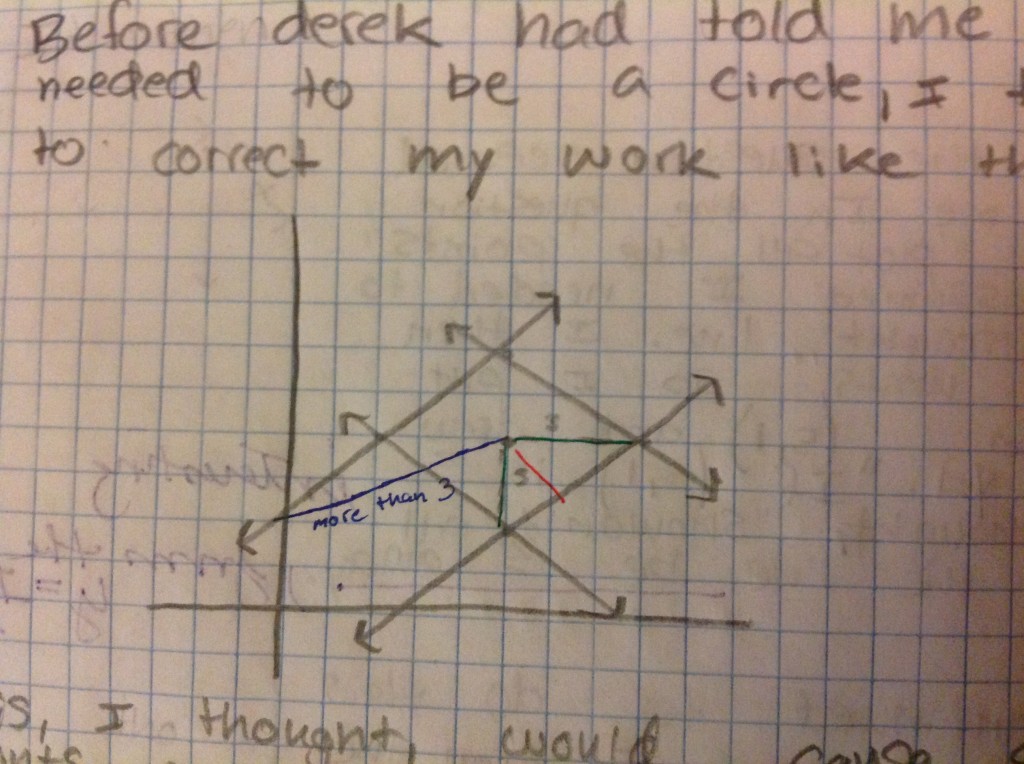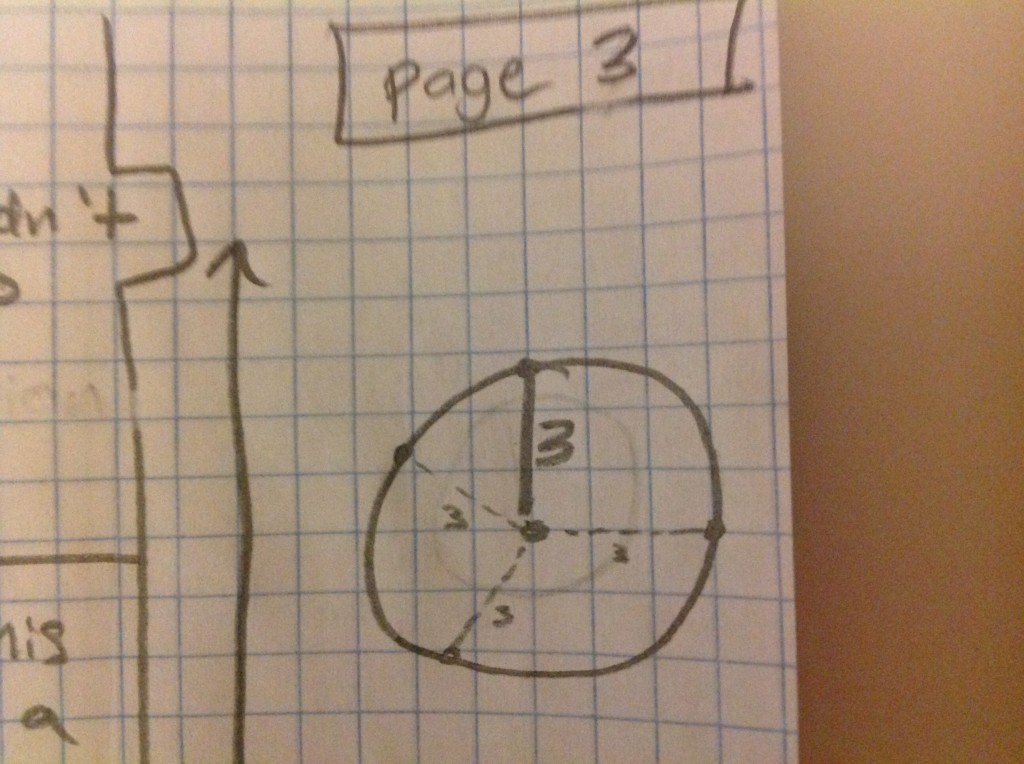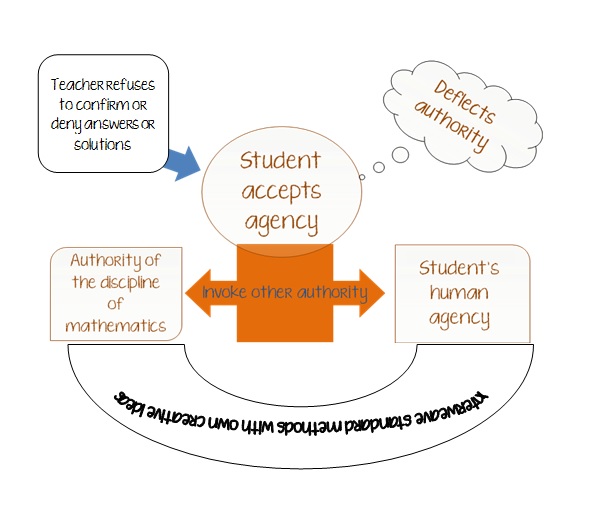One of the things I do at the middle of the term to have students reflect on the way that they talk about mathematics in class, is have them evaluate their work with my Student Self-Report on Class Contribution and I give them detailed feedback on their rankings of each type of question and what I think about their work so far. But what I’ve found in the past is that it’s hard for them to remember specific examples of when they “helped to support the point by contributing evidence” or “raised a problem in another person’s solution” weeks or days after the fact. Students have so much to think about during a class period that it really needs to be “in the moment” for them to be deliberately thinking about what they are doing and saying to each other.
So I had this idea that I would actually have them keep track of the types of questions and comments they made to each other over a five day period at the end of the term and then hand it in to me. This way they would check off each category of question or comment at the moment when they did it. So I made copies of this table of Student Analysis of Contribution and had them keep it on their desks while we were discussing topics or problems in class. They had to have something to write with while they were talking and taking notes too.
Initially the students were very concerned about how they were going to tell the difference between each of the types of contributions. But little by little, it became easier. These categories were not arbitrary, they happened all the time, they just hadn’t really thought about it before. For example, when a student presented a problem but had made an error and didn’t know it, another student usually “raised a complication in another person’s soltuion” or “pointed out an unspoken assumption or misunderstanding.” These are important contributions that they were making every day about mathematics and are important critical thinking skills they didn’t even realize they were developing. I just wanted to help them be more specific about realizing it.
The first day we did this I heard some students say something like, “Ooh, I just…(brief pause while looking at the table)… ‘started the group discussion on a rich, productive track by posing a detailed question.” with pride and excitement (and maybe a little sarcasm). But after three days of doing it, and students seeing that they had places that they could check off, one student actually said, “I think that this table makes our conversations more interesting.”
Here are some samples of student feedback:

This first respondent is a student is very quiet, and she knows it. She rarely speaks in class, but is actively listening. I’ve spoken to her about why she does not ask questions or share her ideas in class and she says that she is afraid of being wrong in front of everyone. My hope all year has been that seeing everyone else be wrong regularly would eventually show her how acceptable it was in class. It was clear that using this table showed her that there are many different ways to contribute to class discussion. When she presented her problems in class (which she will do when asked) she is very capable and knows that she is contributing evidence or examples, but she rarely questions others’ work. I do remember the time when she “built on” what was said by asking a question about someone else’s solution. She also sometimes asks for clarification of her own understanding, but I know that she’s capable of more. I struggle with how to encourage her to get more out of class discussion, but at least now she knows how important a role she can play.

This is a really interesting student who is quite inquisitive and very comfortable with sharing his ideas. When he has a question or comment, it’s very easy to get him to go to the board and naturally start writing another idea or possible solution method. However, I noticed was missing in his table were checks in the two rows that had to do with “inviting others” into his thought process and also making comments on others’ solutions and ideas. It made me wonder how much time in class he spends listening to other students talking or if he is just listening to his own ideas in his own mind. I am working on trying to get him to collaborate more – with his creative mind it would behoove him to start interacting more with others.

This table belongs to a student who really has overestimated his contributions to class. He definitely spends a lot of time talking (and hence I spend a lot of time managing his unrelated talking unfortunately) and thinks that talking – any kind of talking – is useful and contributing to class discussion. One of the things I have talked to him about is the idea of active listening and how important not speaking can be. He has not yet caught onto the idea of being respectful while listening, and still is considering his next talking move while others are trying to make their points. It will be a difficult discussion, but a necessary one for this young man to grow in important ways. At least I now have this chart to refer to when I have that discussion.
So was this exercise everything I had hoped? Not really – but it definitely had some great highlights. Class discussion was very exciting and interesting while students were aware and deliberate knowing the different types of ways in which they could contribute. Knowing that they had to hand this table in to me in 5 days was putting the onus on them to show that they had or had not fulfilled what I had observed of them in class. I do believe they learned a lot about what they were capable of. I do believe I would do it again.

